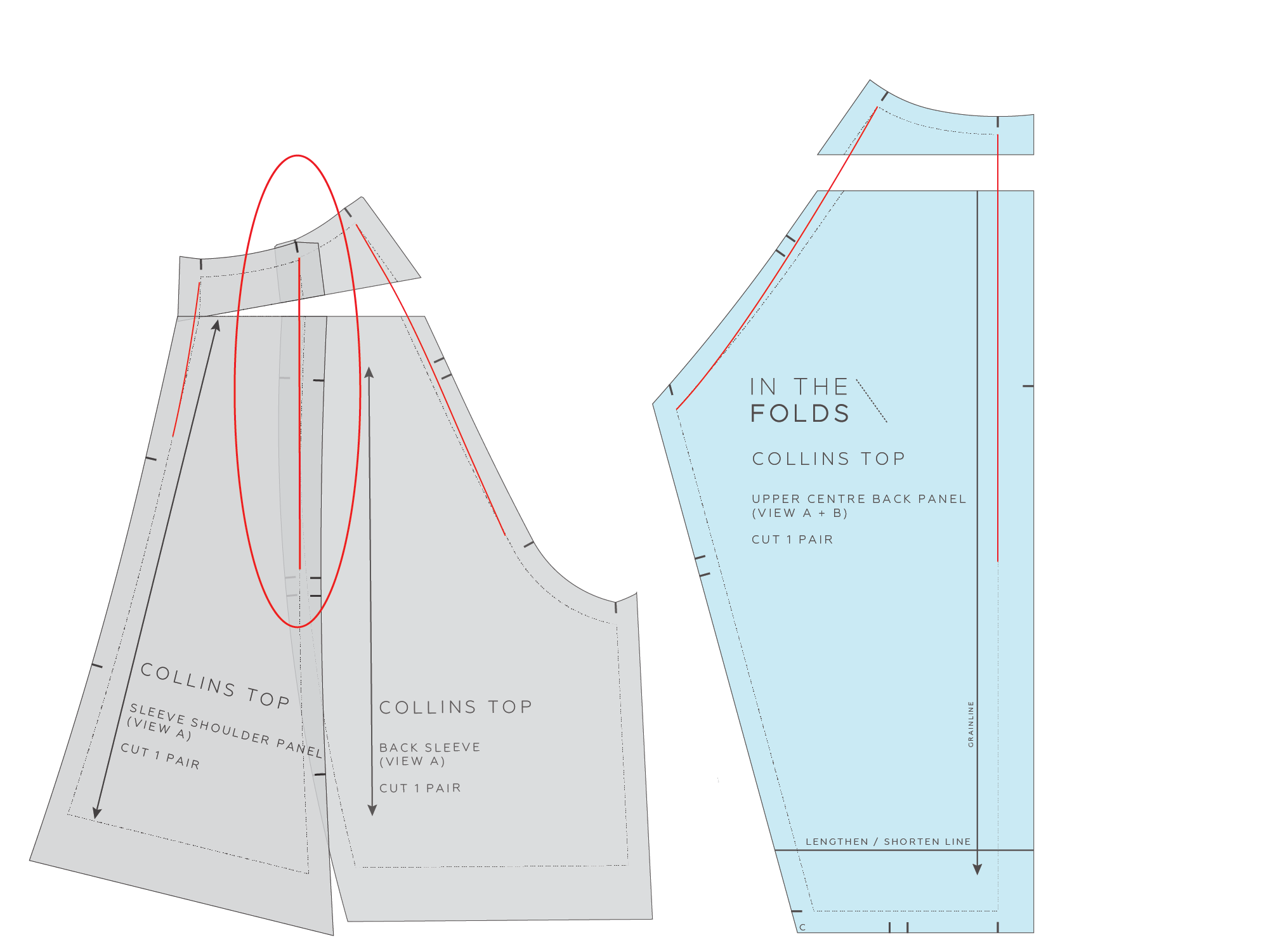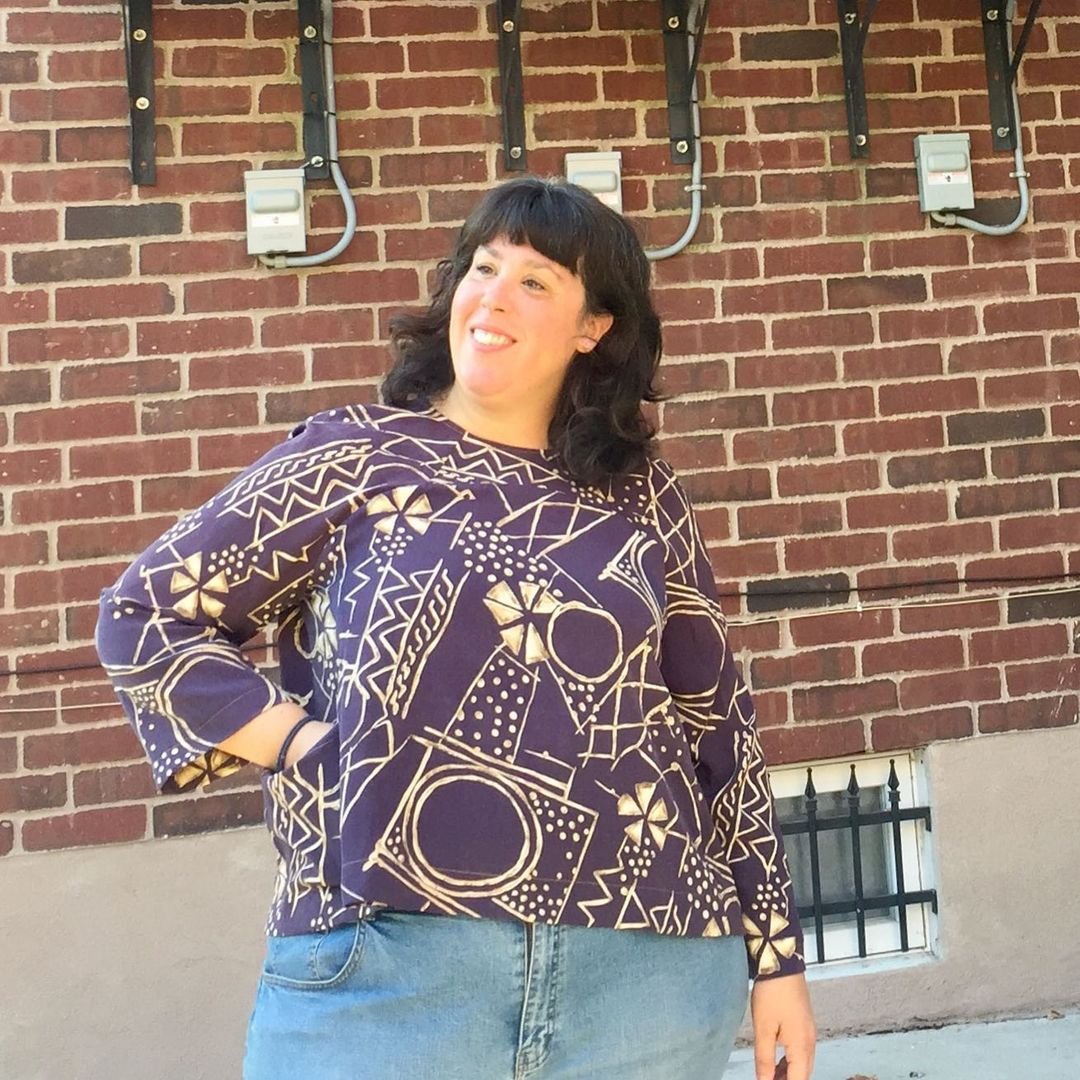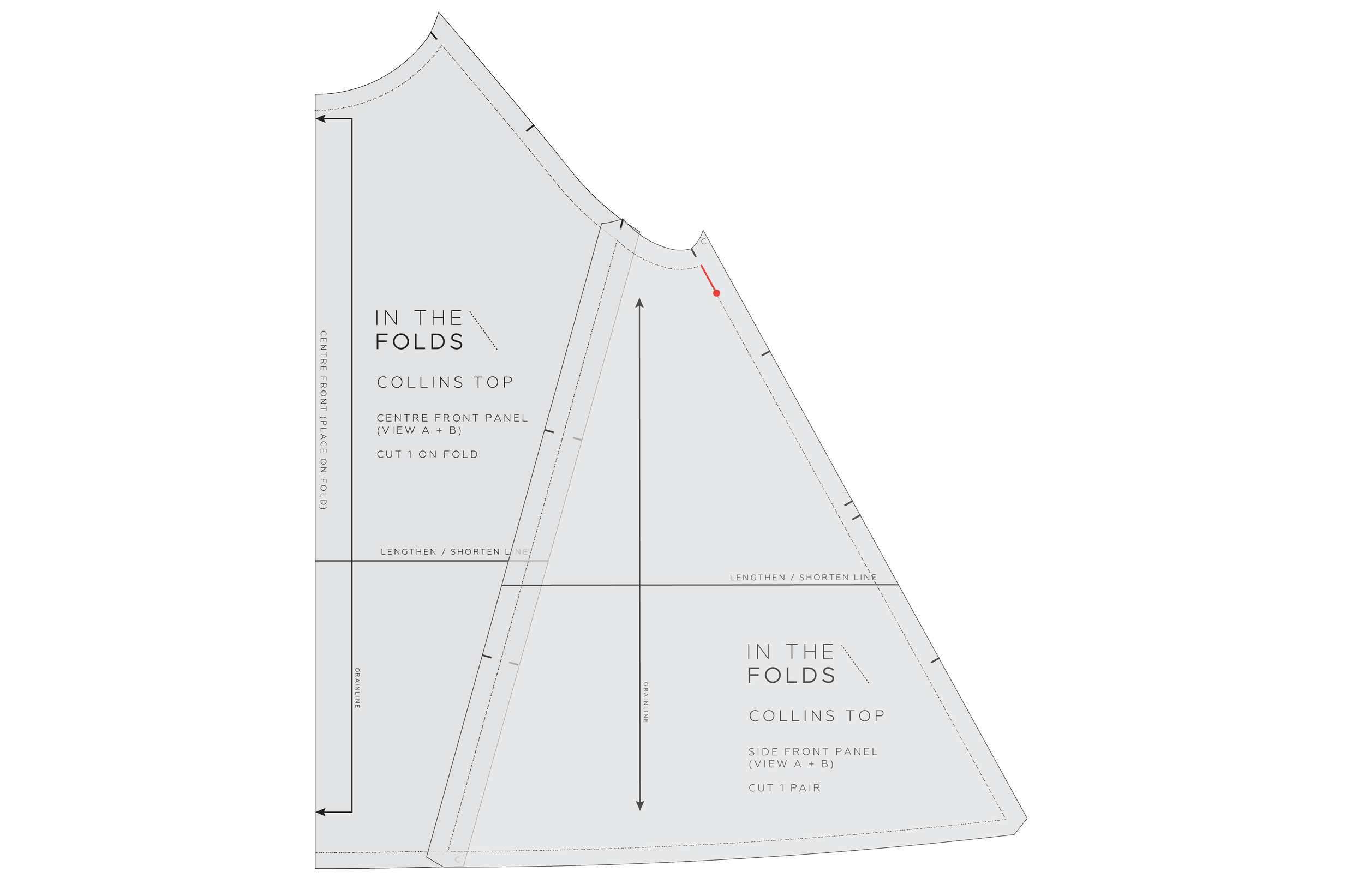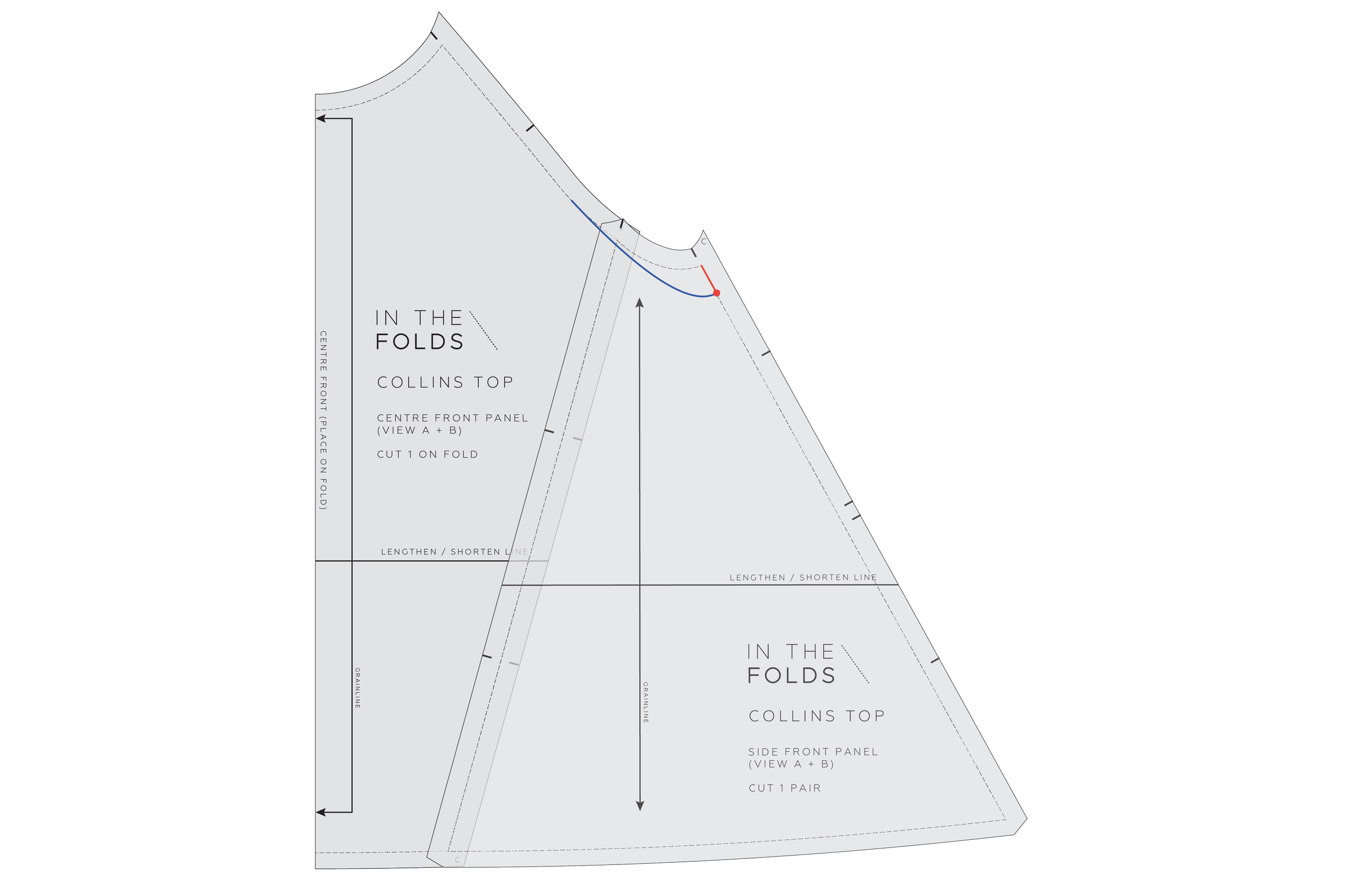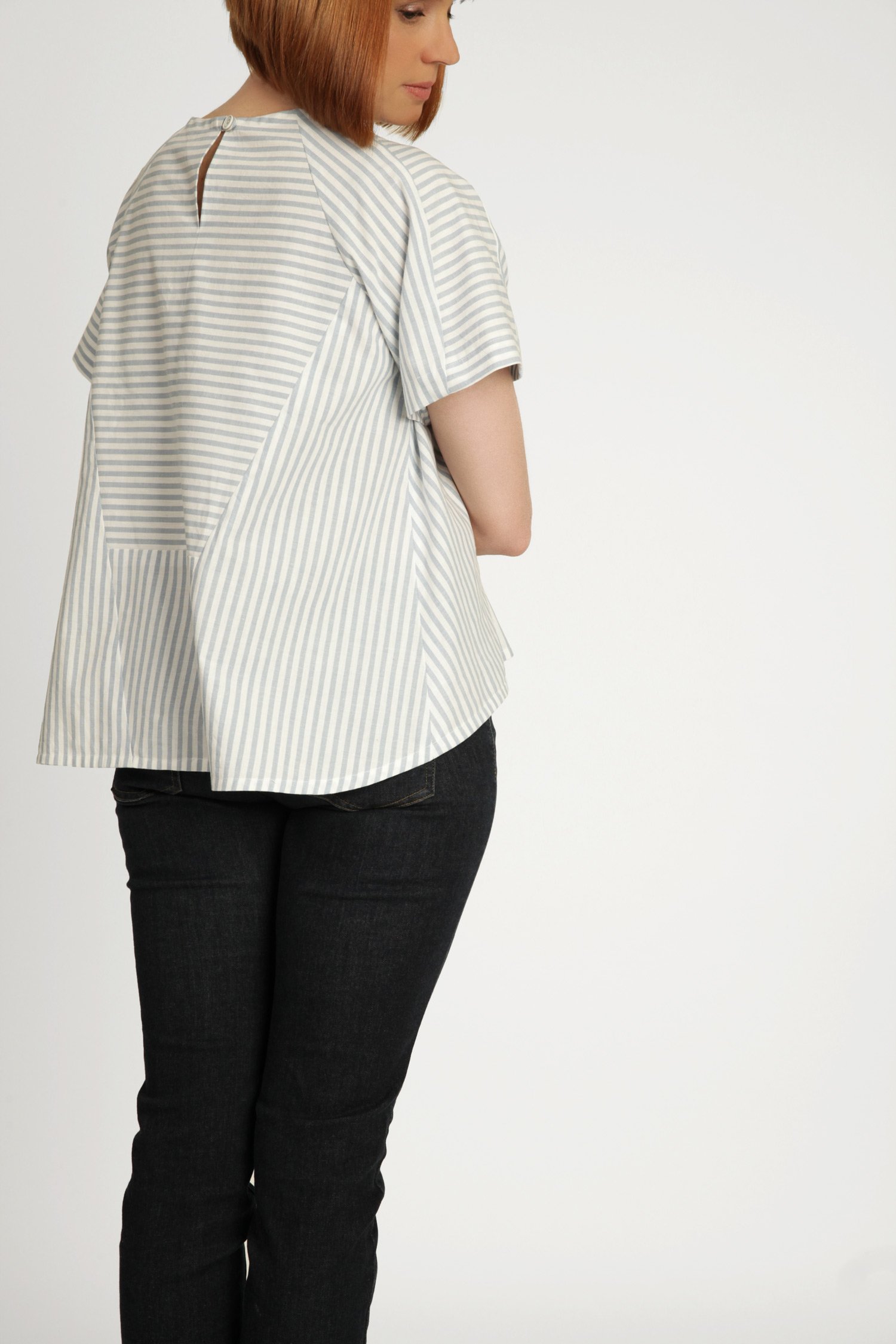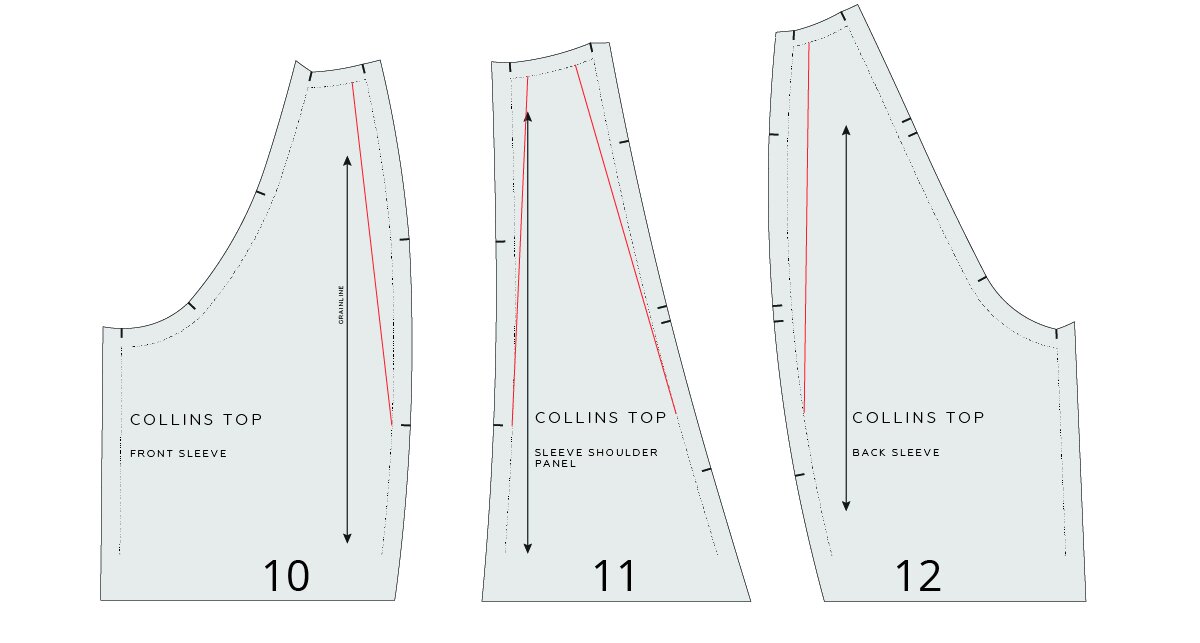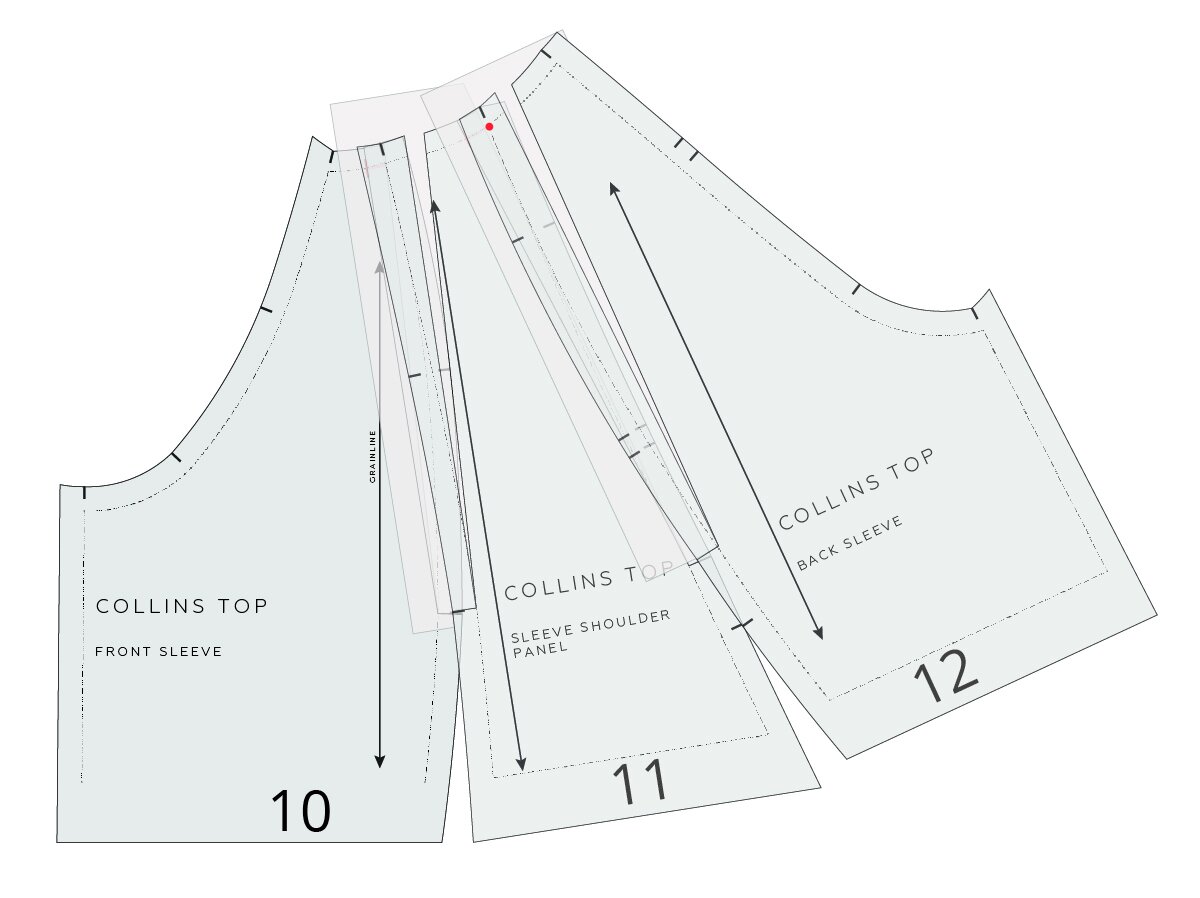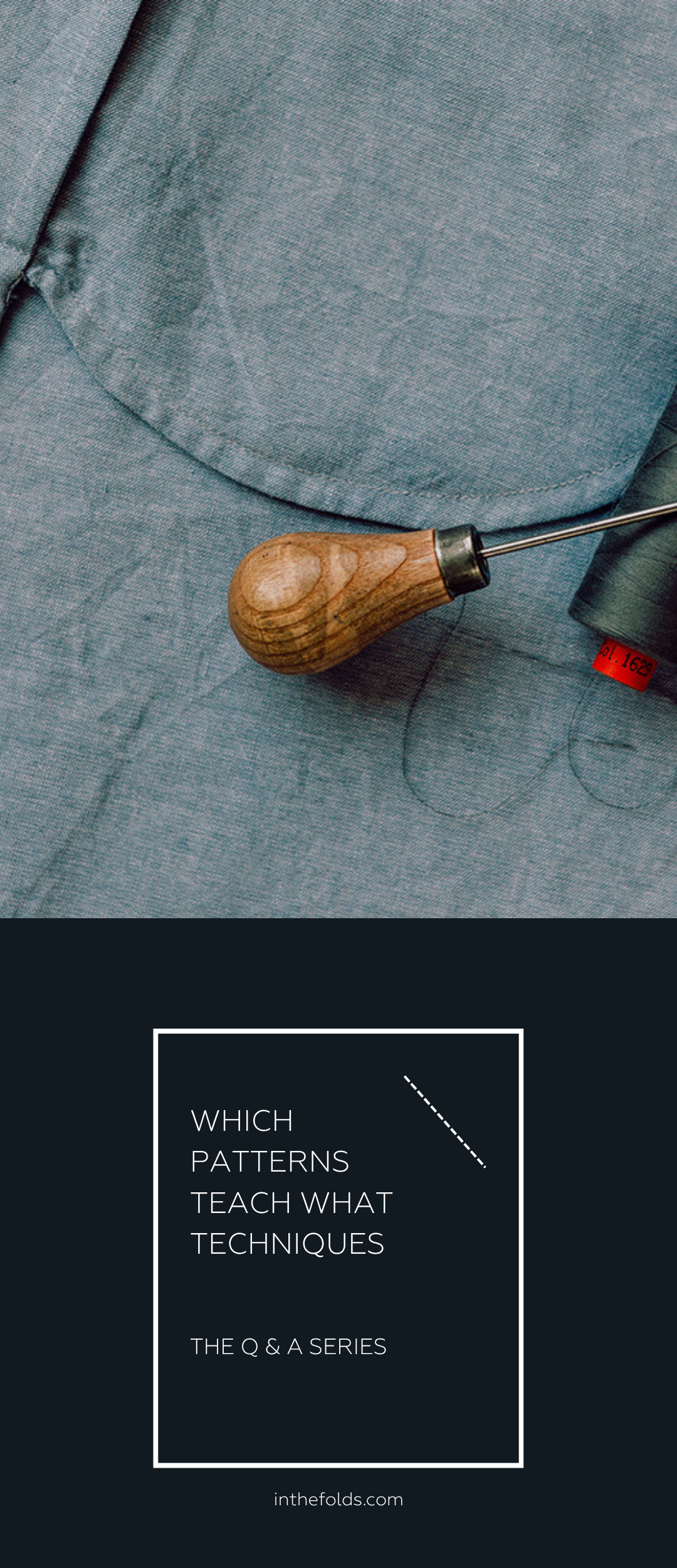THE Q & A SERIES
HOW TO LINE THE COLLINS TOP
How do I line a garment? I'm new to sewing, and recently bought the Collins top pattern, but the fabric I bought for it ended up being a bit more sheer than I would feel comfortable wearing. Do I double up fabric and sew as indicated in the pattern, or can I make this pattern reversible?
Emma
Davis, US
Hi Emma,
The situation you find yourself in is such a common one! I can certainly relate to falling in love with a fabric, only to find that it needs to be lined, except the pattern I want to use doesn’t include a lining. It’s a bit annoying!
Thankfully, as sewists who are focused on learning new skills (like patternmaking) we’re not limited to what a pattern provides.
four ways to line the collins top
When it comes to lining the Collins top specifically, you have a couple of options.
OPTION ONE: UNDERLINING
Underlining a garment is the simplest way to stop a fabric from being see-through.
What is underlining?
Underlining is a technique in which a second layer of fabric is cut and sewn together with the outer fabric pieces before the garment is constructed. Unlike a traditional lining (which is a separate layer added after the main garment is assembled), underlining is treated as one with the outer fabric when the garment is constructed.
You may choose to underline the entire garment, or just part of it. For example, you may decide to only underline the sleeves in a jacket or coat so it is easy to slide the garment on and off.
In the case of the Collins top, you may choose to underline the front and back pieces only and leave the sleeves unlined. A great example of this is when sewing with broderie anglaise. You might leave the sleeves unlined to show off the cut-outs in the fabric, but line the bodice.
OPTION TWO: CREATE A LINING PATTERN
The next option is to create a separate lining pattern for the garment, which is drafted using the original pattern as a base.
How to create a lining pattern for a garment
To start, it’s a good idea to remove any seams you can. In the case of the Collins top, this means removing the panel lines.
To do this, place the pieces together with STITCH LINE on STITCH LINE and trace a copy. Make sure to trace all the important markings such as the grainline and notches.
Some panel lines cannot be removed. For example, the sleeve panel seams create shaping through the shoulder so they cannot be removed.
However, if you want to minimise bulk, you could consider combining the pieces and using darts to create the shaping instead of panel lines.
Consider how you would like the lining to join to the outer garment. In the case of a top or dress, this means considering how the two will meet at the neckline.
OPTION THREE: LINING A GARMENT ‘EDGE TO EDGE’
Lining ‘edge to edge’ refers to a garment construction technique where the lining is sewn directly to the outer fabric along the edges, such that the lining reaches and is attached to the very edge of the garment, rather than being connected to a facing.
This method is often used if the main fabric (fabric that the garment is made in) is bulky or scratchy. By removing the facings, the main fabric will not touch the skin. It is also a good option for sheer fabrics where you don't want to see a facing or seam through the outer fabric. You can also use this method if you would like a quicker method of lining a garment, as it removes the need to draft a lining pattern and the time it takes to attach the facings.
With this option, you may consider adding interfacing to the neckline and armholes (for sleeveless styles) to prevent stretching. If the pattern has facing pieces, you can use these as the pattern pieces for cutting interfacing. Alternatively, trace the armhole / neckline shape and then cut 5cm (2in) width of interfacing as if you were drafting a facing.
If you would like to use this method, you can use the pattern to cut the lining pieces without drafting a new lining pattern.
OPTION FOUR: ATTACH A LINING TO FACINGS
Attaching the lining to a facing or multiple facings can give the inside a clean and professional look. It also has the added bonus of providing extra structure in areas that are prone to stretching, such as necklines and armholes, which can maintain the garment's shape over time.
Facings help to prevent the lining rolling to the other side, ensuring the garment stays in place and the lining is not visible from the outside.
If you’re interested in learning how to draft a facing for the Collins top, we wrote a post about it here for another Emma. If you would like to draft a neck facing only (which is what we’d suggest you do for the neckline on the Collins top) you can find instructions in the Drafting Linings Skills Kit.
Additional tips for sewing a lining for the Collins top
Alter the hem length.
The hem of the lining needs to be shorter than the outer so that it doesn’t extend beyond the hem. When drafting a lining pattern, shorten the lining by 2.5cm (1in) from the hem.
The other thing to keep in mind when sewing a lining for the Collins top is that the pattern has a high-low hem. This means that you may be able to see the inside of the back of the garment when it is worn. So keep this in mind when choosing the best option for the fabric you are working with.
CAN YOU MAKE THE COLLINS TOP REVERSIBLE?
The idea of a reversible Collins top is very interesting! We haven’t got any resources about making a garment reversible at this stage, so thought we’d link to this great post which covers the things to consider if it’s a project you’re keen to have a crack at.
One thing to consider with making it reversible is how the closure at the neckline will work. In the case of the Collins top, which has a button and loop closure at the centre back, you could consider two buttons, one on the inside and one on the outside. Be sure to choose nice flat buttons so they don’t create bulk. The other option is to remove the closure altogether. Some makers have chosen to do this and haven’t had any problems getting the top on or off. As always, I recommend making a toile to check it works for you!
Happy patternmaking,
Emily
RESOURCES MENTIONED IN THIS ISSUE
The Collins top pattern can be found here.
The Stow dress pattern can be found here.
How to draft a facing - tutorial can be found here.
Seamwork article - Make it reversible - can be found here.
More information about our Curated by ITF subscription can be found here. Sign up during the month of September to get part one of our Sewing Linings Series, the Drafting Linings Skills Kit, delivered straight to your inbox.
For more issues of the Q & A series, you can check out the archive here.
WHAT YOU’VE BEEN MAKING
Sawtell dress made by @sarahissewcrafty


















